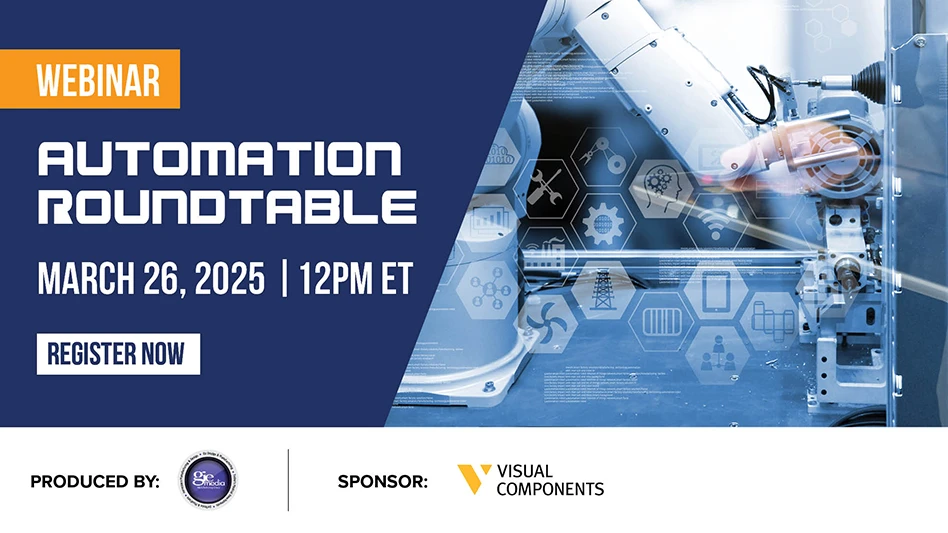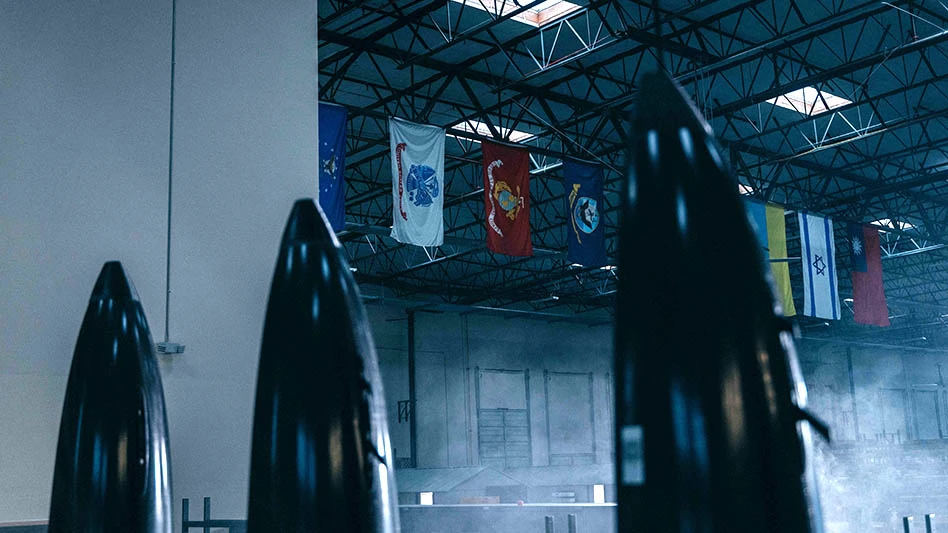
Engineers from the Manufacturing Technologies Division, Air Force Research Laboratory (AFRL), demonstrated a multi-purpose robot using real-time sensor feedback to conduct work in a localized environment.
Designed for use on the aerospace manufacturing factory floor, the 22,000 lb Advanced Automation for Agile Aerospace Applications (A5) robotic system capitalizes on advancements in man-machine interfacing technologies. The A5 robot is anticipated to cut depot maintenance times for aircraft coating removal up to 50%, saving time and money throughout an aircraft’s life.
“Typically, robotic arms are bolted into place and perform repetitive actions as a platform moves down a line,” says Rick Meyers, an automation and robotics program manager at the AFRL.
However, the A5 robot is mounted on a mobile platform and uses advanced sensors to conduct real-time path planning and analysis as it moves about an aircraft. An onboard computer receives the sensor data and generates an optimized maintenance activity plan for an operator to confirm. This processing ability enables the A5 to adapt to multiple aircraft types without system reprogramming, which adds time and cost to maintenance efforts.
“One depot may spend upward of 40,000 labor hours on just sanding and paint removal,” Meyers says. “Robots are suited for these types of repetitive tasks, freeing the maintainers to partner with the machines as operators versus laborers. Robotics
The A5 robot program is nearing the end of its Phase I effort, which focused on developing an adaptive robotic sanding capability for the C-17 cargo jet. Following the successful demonstration on a mock-up aircraft during a recent event at the Southwest Research Institute in San Antonio, Texas, the A5 system will be tested on a C-17 at Warner Robins Air Force Base, Georgia, in Autumn 2018.
The AFRL team is still defining A5’s next application and is considering pursuing development on nondestructive inspection or composite repair. The robotic expertise developed during this project, combined with the ability to leverage cutting-edge technology for the military, is a big step toward realizing the AFRL vision for advanced robotics for defense.
“The future aerospace manufacturing environment will feature flexible and reconfigurable robotic systems that work in close proximity with the human workforce,” Meyers says. “The A5 robot demonstration is an initial step toward enabling this vision to be commonplace in the defense manufacturing domain.”
Air Force Research Laboratory
www.wpafb.af.mil/AFRL
Southwest Research Institute
www.swri.org

Explore the July 2018 Issue
Check out more from this issue and find your next story to read.
Latest from Aerospace Manufacturing and Design
- March Manufacturing Lunch + Learn with Quell Corp.
- March Manufacturing Lunch + Learn with SMW Autoblok
- SwRI addresses critical aging aircraft issue
- Walter adds tools to its PCD milling cutter range
- Archer Aviation, Palantir partner on next-gen aviation
- Fairlane Products’ TG GripSerts and accessories for low-profile clamping
- Boeing to build US Air Force’s sixth-generation fighter jet
- Sandvik Coromant introduces CoroMill Plura barrel





